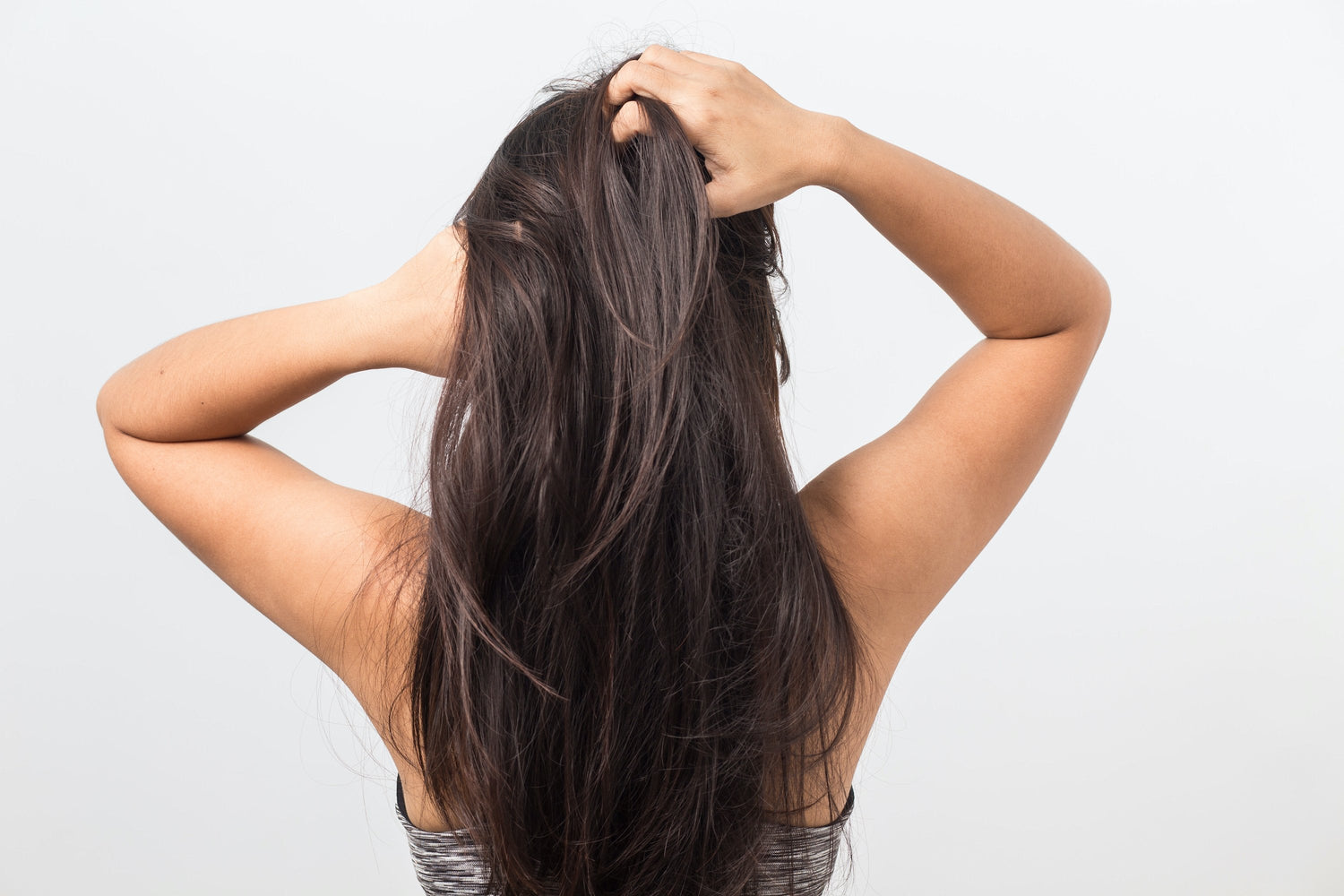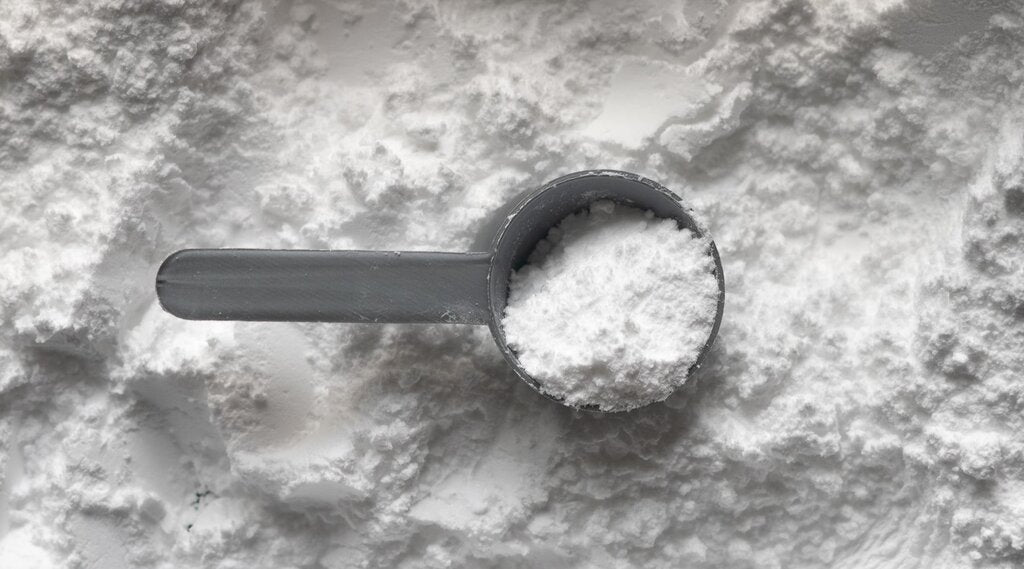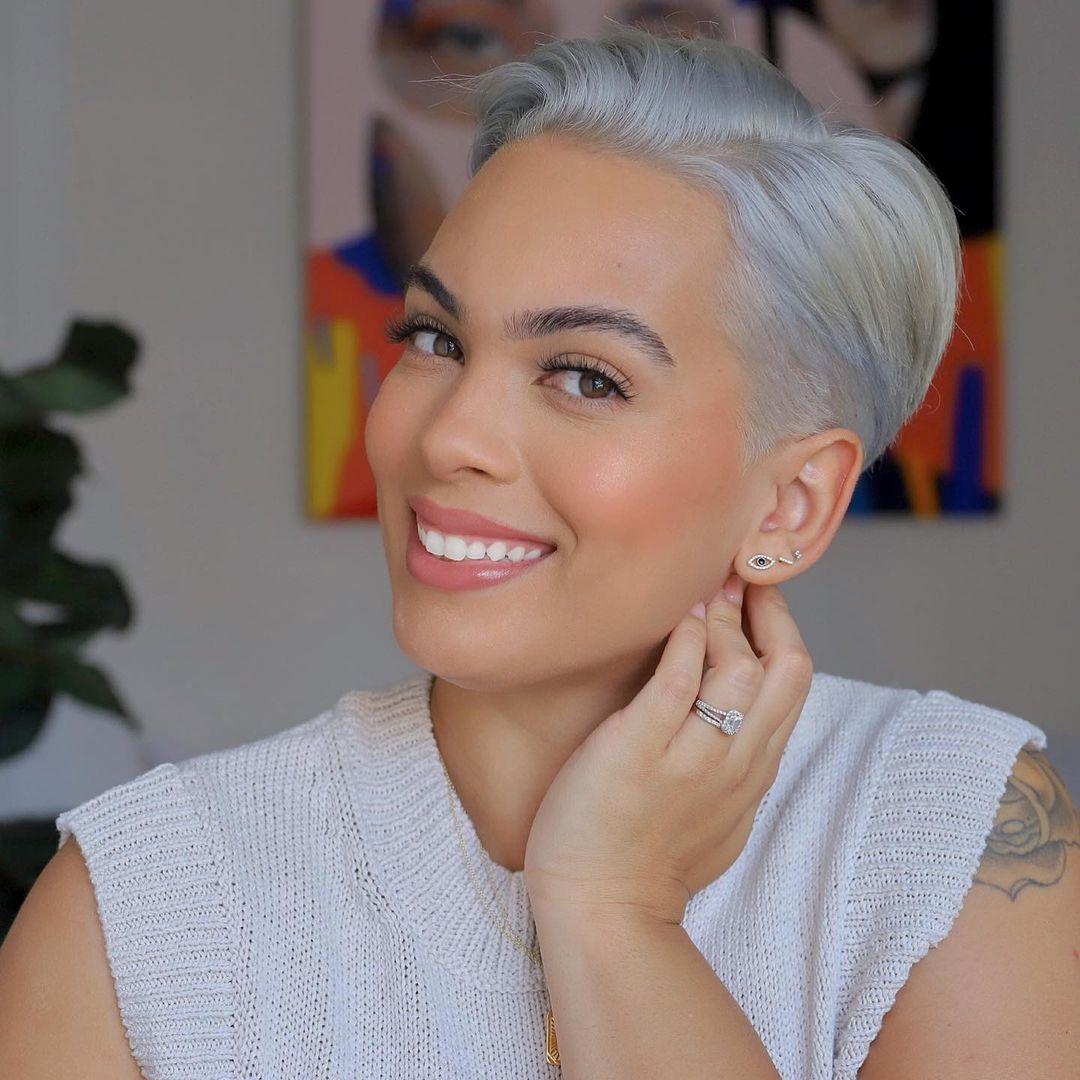Indian women are always known for for their lustrous, thick and healthy hair. It is believed that the care Indian women show their hair with scalp massages and oils infused with Ayurvedic herbs can be the reason behind why their hair is the most sought after in the world.
These beauty practices can be traced back to Hindu myths and religious text known as the Vedas, where angry deities had unruly hair, whereas patient deities had thick, curly hair or smooth braids.
These myths and the Ayurvedic practices that support them are part of traditional hair care in India, and you can apply these same remedies at home to encourage hair growth and get shiny, bouncy tresses!

What Is Ayurveda?
With the influence of Ayurveda in many Indian hair growth remedies, it helps to understand the basics of Ayurveda. Ayurveda is an ancient practice based on identifying the humors of the body and their relationship to the natural elements: air, wind, earth, fire, and ether.
Ayurveda identifies three predominant doshas, or constitutions, known as vata, pitta, and kapha. Everyone can have a combination of one, two, or all three. Each dosha influences the internal organs, as well as a person’s physique, attributes, and emotions. Ayurvedic practitioners believe that imbalances in these doshas causes illness, affecting various parts of the body, including the hair and how well it grows. Ayurveda teaches that a healthy body and mind will result in healthy hair and scalp, leading to optimum hair growth in the process.
Determine Your Dosha Hair Type
Just like skin, hair is also very individualized and from an Ayurvedic perspective, hair is rich in stories it can tell about a person and their skin. When thinking about hair doshas, it's important to differentiate prakriti (a person’s harmonious state with a unique dosha balance for each person) from vikriti (the state of imbalance). While prakriti is important, it is typically vikriti that bothers people the most. If you have beautiful locks of hair and that's the hair that you’ve always had, then that’s your prakriti.
If you normally have beautiful locks of hair that are now becoming thinner or prone to breakage, that is vikriti showing there's an imbalance in the doshas. The health and imbalances of your hair can even offer some clues about the health of your skin and your overall state of being.
One of the notions in Ayurveda is that with aging, everyone transitions from kapha (childhood and young adulthood) to pitta (young adulthood to middle age) to vata (middle age to elderly).
Vata Hair Type
Vata types have a higher proportion of air and ether, and will likely to have porous hair that is naturally wavy hair and prone to having a dry scalp. When hair is porous, the hair absorbs products and dyes well but it also means that the hair strands also take in dust, smoke, and toxins in the air and are prone to breakage and damage. In addition, when the overall vata dosha is imbalanced, the individual may develop an oily scalp with itchy dandruff and hair fall, or sluggish hair growth.
Pitta Hair Type
Pitta types have a greater proportion of fire and water or fire and air, and will likely have naturally straight, silky hair. A pitta dosha hair type is moderately resistant to hair dyes and colors, because the hair follicle is typically dense, which means it’s also resistant to both topically applied nutrients and air-pollution. An imbalanced pitta dosha can cause dryness or oiliness on the scalp, depending on the proportions of air and water, which may also result in increased hair fall and sluggish hair growth.
Kapha Hair Type
Kapha types have a higher proportion of earth and water, and will likely have naturally curly hair with coarse texture and an oily scalp. Since the hair follicle is often very dense and doesn’t take in nutrients or dyes easily. When a person with kapha is unbalanced, their hair may become fine and brittle, and may break easily.
The Basics of Ayurvedic Hair Care
Since each individuals' doshas are different, a hair growth regimen that works for one person might not work for someone else. Creating a customized routine for your particular hair type is the first step in encouraging hair growth.
Mental + Emotional Wellness
A major tenet of Ayurveda is that all disease originates in the mind, and begins with dosha imbalances that stem from imbalances in our emotional and mental state. And while your mental-emotional state might seem to have little to do with hair growth, there’s some science to support these ideas.
For one, a 2020 study showed that hormones have a major influence on hair. A 2017 study suggested that chronic stress, excessive exercise, smoking, and drinking can lead to hair loss.
A
Nutrition
In Ayurveda, following a good hair care regimen includes eating well, offering the hair follicles nourishment from within and may help to prevent hair thinning, hair loss and lead to new growth.
Consuming foods that contain balanced proportion of vitamins and minerals, plus a healthy amount of protein, are always best.
Best practices for a balanced diet include:
- a diet rich in dosha-specific fruits and vegetables
- a moderate amount of healthy fats, from ghee or nuts
- digestive aids like fennel, cumin, turmeric, ginger, and honey
- herbal supplements, like Triphala, to balance the doshas
Healthy fates from ghee and nuts help to nourish the body and can also translate into shiny, well-nourished hair. In addition, adding small amounts of cumin, turmeric, ginger, and honey aid the digestive juices to promote absorption of nutrients.
Taking Triphala as an herbal supplement in the morning is another common Ayurvedic practice to improve digestion and
Hair Oiling
Hair oils help nourish the scalp and hair follicles, as well as increase circulation in the scalp. Adding hair oiling and scalp massages to your hair care routine can do wonders for hair growth and general conditioning,
The best oils by type are:
- almond oil or sesame oil for vatas
- coconut oil or almond oil for pittas
- olive oil for kaphas
Scalp Massage
Regardless of dosha, an Ayurvedic hair care routine recommends a warm oil head massage followed by 20 minutes of rest before washing your hair. Gentle scalp massages with herbal oil can do wonders for hair growth and general conditioning. A
Herbal Hair Washing
In Ayurveda, the fruits from the reetha (Sapindus mukorossi) and shikakai (Senegalia rugata) plants are added to warm water and converted into a frothy, soapy, shampoo-like product. This mixture maintains the moisture of the hair strand, and the water is used to clean and nourish the hair.
Herbal cleansing remedies can help improve hair health. In addition to applying warm herbal oils prior to cleansing hair, herbs can be included as part of:
- scalp and hair treatments
- cold and warm hair rinses
- hair teas or soaks
You only need a few simple herbs to make a hair tea or rinse. Dried powders, flowers, leaves, and herbs are some favorites in Ayurveda when it comes to hair care which include:
Rose petals
A rose petals are said to be calming to all doshas, and is best added to a lukewarm bath or cold rinse to retain the delicate aromatic oils.
Green tea
Green tea is warming, astringent, and may help decrease the kapha dosha. In addition, warm green tea makes a good hair rinse for shiny and bouncy hair.
Mixing green tea or a green tea powder with rose water to create a fragrant, stimulating scalp mask.
Neem
Neem leaveas are cooling, antimicrobial, antibacterial, and can help control dandruff. Using fresh neem leaves can be used to make a warm hair tea or used as a warm hair rinse. Neem powder can be made into a paste with tap water and used as a hair and scalp mask.
Tulsi or Holybasil
Tulsi, or holybasil, is considered warming and helps promote hair growth. Fresh tulsi leaves are ideal in a warm rinse, either on their own or mixed with green tea leaves. Tulsi leaf powder makes a great paste for a dry and irritated scalp, especially when mixed with aloe for a cooling preparation that’s easy to apply.
Amla
Also called Indian gooseberry, amla is high in vitamin C and is effective in removing dandruff. Add it to a hair rinse, or mix it with holybasil leaves for an effective scalp mask.
Henna Leaves
These can be used to make a paste to calm a hot or irritated scalp. More readily available in dried form, a paste of henna, enhanced with fragrant and calming aromatic oils, offers similar benefits.
Hibiscus
Hibiscus flower helps remove stagnation from the scalp and may encourage hair growth. It can be used in dried or powdered form and applied to the hair in a mask or as a shampoo ingredient.
It’s ideal to oil the hair 2 times per week and wash with shampoo afterward. Washing more frequently may strip the hair of its natural oils and discourage optimal growth.
Scalp + Hair Treatments
A scalp or hair mask is often used to treat undernourished areas by directly delivering nutrients where they’re most needed, and seals the nutrients in the strands. Fenugreek, a traditional Ayurvedic herbal medicine loaded with potent antioxidant and anti-inflammatory flavonoids such as ______. If that would not be enough, fenugreek is also claimed to have antimicrobial and antifungal properties treat scalp issues, like dryness and dandruff.
Hair Teas + Rinses
Rinses and hair teas serve as a finishing step in hair care. A rinse involves washing the hair out with water. A tea involves soaking the hair in a tub. Traditionally, herbs, like neem or henna leaves, have been added directly into buckets of warm water or mixed into bath water to create herbal rinses and teas.
Fragrant floral additions are often used in cold water baths, including:
- rose petals
- jasmine buds
- honeysuckle
- hibiscus
These ingredients may calm irritated skin, including the scalp, and leave behind a sweet, pleasant scent. As mentioned before, hair issues can be best treated by first addressing dosha imbalance through mental health and diet. Although it isn’t a quick fix, the wisdom of Ayurveda focuses on holistic solutions rather than remedies that only target symptoms.
For instance, this means that herbs and oils aren’t meant to solely address frizzy hair or dandruff. They’re designed to treat the whole person. This means that applying aloe vera to the scalp would help provide coolness and hydration, but it wouldn’t necessarily address the systemic issue.
When left untreated, dosha imbalances allow problems to resurface. This includes hair loss. That’s why remedies should be part of a larger, integrated approach toward self-care and wellness.
The Takeaway
Our hair is often an indicator of our overall health. Proper hair care is about taking care of the hair, as well as the rest of the body. Ayurvedic hair care is just one part of a holistic self-care routine that can lead to increased hair growth and shiny, healthy hair.





